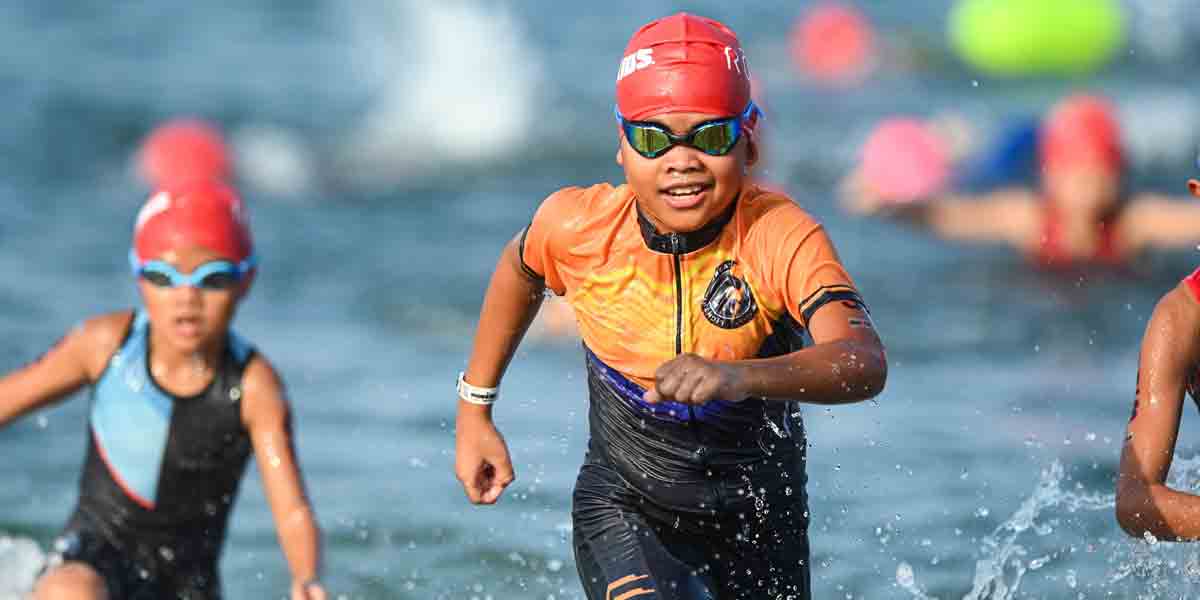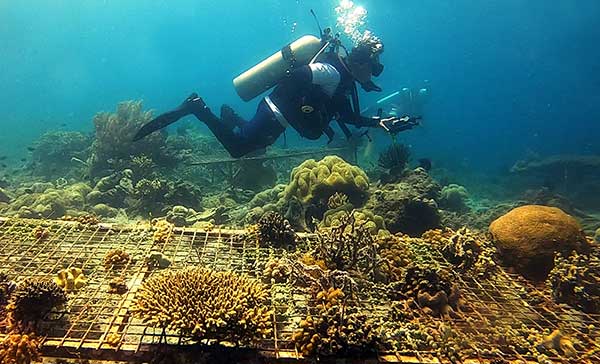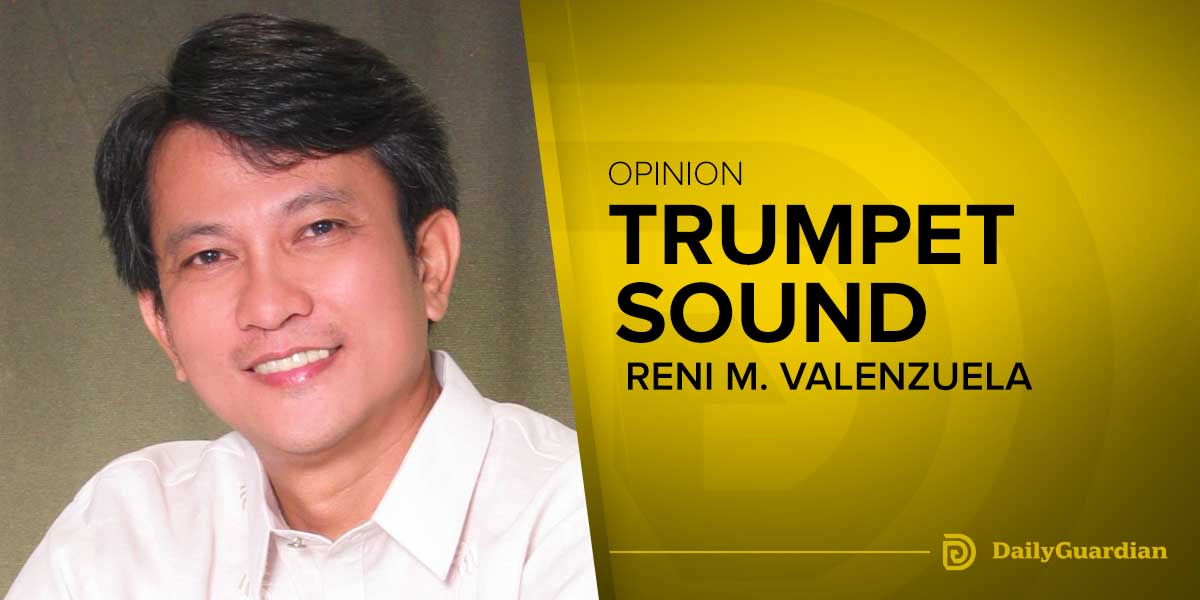By Gregg Yan, UNDP BIOFIN
We’re zooming through a highway in Gen San, headed for the sea. The southernmost tip of the Philippines might be known for giant tuna, but it has an even more famous resident: Manny Pacquiao, world-famous boxer and politician, was born and raised here.
The Pacman is so famous that his family now holds office in this province. Even our van is tuned to ‘Pacman Radio’ and the music – a kind of manic island reggae called budots-budots, isn’t all that bad.
I’m here for a talk and to explore a coral reef I last visited in 2010, when a Visayan-speaking American named John Heitz led us through some pretty good dives.
“We’re approaching the site,” announces Abel Pacomo from the Sarangani Bay Protected Seascape or SBPS. The van pulls into a well-provisioned dive resort called Lemlunay and in no time at all, we dive into the blue.
UNIQUE CORAL REEF
Riding a steady current along a coral-coated reef wall, we discover an enormous red seafan. It’s taller than me, fins or no fins – and it must have been growing here for most of a century. This is Kamanga Reef – home to neon-hued corals, sponges, fish and some divers swear, even a baby blue whale once.
Here the current shifts faster than a politician’s allegiance. Here sleek fleets of fusilier merge with wafting clouds of damselfish and anthias – all feasting on the plankton drawn in by the tide. But what makes this site unique is that it’s right in the middle of business and industry.
To our right sits a 237 Megawatt coal-fired powerplant. To our left sprawl various aquaculture farms, churning out everything from tiger prawns to bangus. Though sandwiched between development, this reef is seemingly thriving.
MODERN DAY PROTECTED AREA
In the minds of many, a ‘protected area’ is a mountain, forest, coral reef or another remote place accessible only to a select few – an almost off-limits time capsule to preserve forever. For real-world conservation though, this isn’t usually the case.
“Today’s protected areas are usually situated around towns and villages. Sometimes, people live right inside our parks, which is why modern conservation is largely about balancing and harmonizing the needs of both people and the environment,” explains Cirilo Lagnason Jr. Known to friends as Bugoy, Visayan for playful boy, he’s a youth leader who graduated from the government’s Environment and Natural Resources Academy (ENRA). Now superintendent of the SBPS, he heads a talented team of 50 people and personifies a new generation of government leaders.
Proclaimed as a protected seascape in 1996 and legislated as an ENIPAS site in 2018, the SBPS spans 210,887.69 hectares and is among the largest seascapes in the country. With 227 kilometers of coastline, the area hosts at least 411 fish, 19 whale and dolphin, five marine turtle and 25 mangrove species, not to mention a whopping 60 genera of hard and soft coral. Rare and endangered Dugongs also inhabit the SBPS, whose mascot is Gong Dugong.
Surrounding all this biodiversity are active oil and fuel depots, steelworks, factories, power plants, aquaculture facilities, beach and dive resorts, plus wharves for unloading and shipping out goods. The area around the SBPS is also heavily populated, with over a million people living around it.
INSURANCE FOR PHILIPPINE CORAL REEFS
Coral reefs provide a wide range of ecosystem services, writes Dr. Hazel Arceo, a reef researcher from the University of the Philippines Cebu. “These include food provision, coastal protection, plus opportunities for recreation and ecotourism.”
Doc Hazel is now studying the vulnerability of Pinoy reefs to prepare for a brand-new coral reef insurance system being developed by the United Nations Development Fund’s Biodiversity Finance Initiative (DENR-UNDP-BIOFIN). Today’s reefs are facing a tidal wave of challenges, ranging from climate change and marine pollution to overfishing and coastal development.
“Insurance, as a form of risk transfer, can help secure coastal resilience, particularly when combined with traditional risk reduction and mitigation measures,” explains UNDP-BIOFIN Philippines Project Manager Anabelle Plantilla. “Financing should be able to support not just operations, but programs and initiatives for disaster response, to enhance mitigation and adaptation and to build up each reef’s social-ecological resilience.”
BIOFIN’s reef insurance system will be piloted in the country’s largest protected seascape – the Tañon Strait, which covers the waters between Negros and Cebu in the Visayas. Working in over 40 countries, UNDP-BIOFIN helps develop both practical and creative ways to raise funds for the upkeep and improved management of the world’s protected areas.
Set to conclude operations in the Philippines in 2030, UNDP-BIOFIN has so far raised over USD84 million for 107 Legislated Philippine Protected Areas by pushing for increased congressional financing since 2020. Its Year of the Protected Areas campaign also captivated public interest in visiting the country’s protected areas after the COVID-19 pandemic.
“Managing large protected areas means we must work with a consortium of allies,” explains Bugoy. “Business and industry are necessary for development and can positively contribute to conservation. If companies cannot directly help conserve biodiversity, then we’ll do what we can to minimize their environmental impacts and find ways for them to help in other ways, particularly by paying fees to support conservation inside the park.”
Park collections have been steadily rising in recent years: SBPS collected PHP62M in 2024 compared to just PHP7.9M in 2016 – enough to fund over 50 staff, plus the establishment and upkeep of a marine wildlife rescue center, undersea ‘coral gardens’ for future reef restoration initiatives, plus a composite maritime enforcement group comprised of the Philippine National Police, Coast Guard, Bureau of Fisheries and local Bantay Dagat members.
“If you want to operate inside our protected area, then you have to pay a premium rate. We also have stiff environmental fines: damaging or destroying a square meter of coral reef entails a fee of PHP19,000. All this funds enforcement and ensures compliance with environmental laws and standards.”
Most of the country’s 244 protected areas aren’t as well off as the SBPS, which can be a pragmatic model for tomorrow’s parks, given that development has been creeping closer and closer to the country’s protected areas.
* * *
Back on the reef, we’ve moved on to shallower waters to check out a ‘coral garden’, where hard coral heads and fragments have been attached to a wire mesh. “We’re pilot-testing four main genera of corals: Acropora, Pocillopora, Stylophora and Porites. We want to know which ones are best for various reef restoration projects. We found Acropora to grow the fastest, while Porites is the most resilient to siltation and strong currents,” says Earl Angelo Tahad, a researcher and member of the SBPS team. “Should the need arise, then these coral heads can be used as seedstock for new coral gardens around the SBPS and greater Mindanao.”
With coral reefs thriving between developed areas, the SBPS offers a glimpse of what tomorrow’s PAs might look like – a relatively harmonious balance of economic and environmental activities, coexisting side-by-side.
“Short-term solutions like coastal cleanups, tree planting and even coral gardening activities are certainly useful, but they must be part of a holistic, long-term plan to initiate positive change and safeguard the natural wealth of our protected areas,” concludes Bugoy. “The key to it all is balance.” (ENDS)



























